Trees, like humans, need gentle care to survive and grow. Sometimes, problems arise, and you don't know why they happened and how to remedy them; mulberry plants are easy to grow even in areas without enough sunlight or water. This topic will help you uncover why your tree is dying and what to do when a problem exists.
Several diseases may not sound obvious to humans but can destroy and kill plants in an instant. Below is a list of problems that can harm your mulberry plants.
- Armillaria Root Rot
- Bacterial blight
- Westwood or Slime flux
- Canker
- False powdery mildew
- Wood-boring insects
Plants are also sensitive to anything harmful to their elements and the environment. What might be a small coincidence for humans could be a massive problem for the plants we tend to oversee. We'll discuss each factor, what causes them to destroy mulberry trees, and how to remedy them. Let's dig in!

Why is My Mulberry Dying?
Generally, mulberry plants are easy to grow even in poor soil conditions or lack of water. They thrive anywhere and produce delicious sweet-tangy black or red berries. However, mulberry plants are susceptible to certain phenomena that we tend to ignore and regard as harmless and normal.
1. Armillaria Root Rot
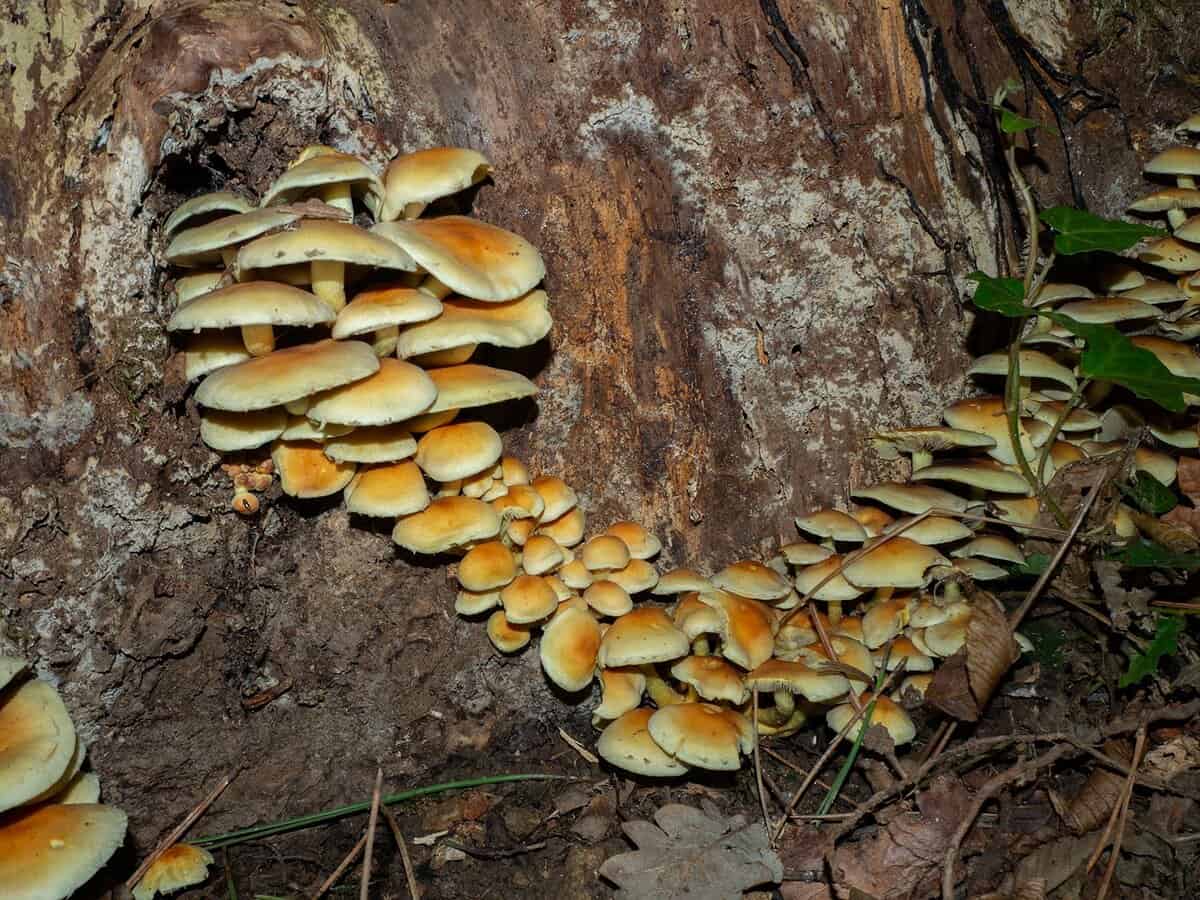
The disease is commonly found in woody plants and trees; also affects succulents and other herbs. The leading cause is a fungus that affects the tissue that grows on bark and wood and eventually spreads to the base of the trunk, damaging the tree. Its identification is by the presence of clusters of brown mushrooms at the foot of an infected tree trunk
Although mulberry plants can survive even in harsh conditions, left unattended for extended periods can begin to destroy their natural leaf color and branches and eventually kill the entire tree. Over time, damage to the roots can affect its ability to provide the tree with adequate water, resulting in leaf wilting, discoloration, and thinning.
2. Bacterial Blight
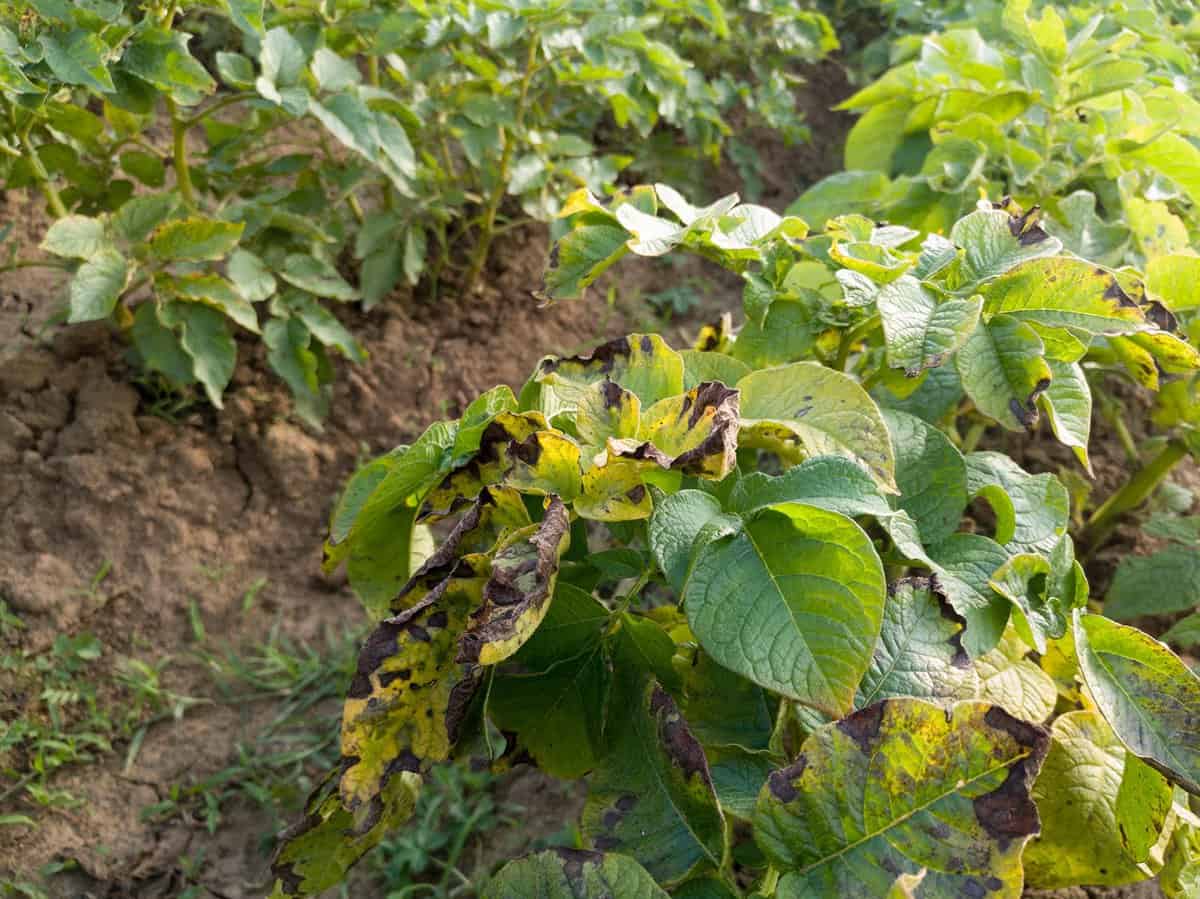
Another disease that causes problems in mulberry plants is the presence of bacteria. Bacteria are often present in plants but do not cause harm if not triggered by some stimulus or condition. Furthermore, bacterial blight is typical in a season of insufficient light, dreary, and winter conditions.
It mainly affects a tree's foliage causing stress and stunted growth. More than that, there are brown-colored wet spots on the leaves or many speckles on the leaves - wilting. As the speck develops in wet conditions, its appearance expands, causing spots to multiply; the leaves may turn yellow and eventually fall off.
3. Wetwood or Slime Flux
Innocent injuries are often overlooked and can be fatal to trees. It includes injuring the trunk, bark, or roots by animal scratches, improper mowing, or lawn equipment, which can damage part of the tree. Wounds caused by these factors can become a big problem if certain bacteria or fungi infect the wound and inhabit the inside of the tree, destroying it in the process.
Slime flux refers to the appearance of a viscous fluid that oozes from a wound and produces a foul and pungent odor. The main symptoms may not be all that troublesome, but if these factors stress an infected tree, the results can be fatal, causing leaf wilting and tree death. Additionally, some plants develop foam at the base of the trunk or bark or, in other cases, gray or white bubbles.
4. Canker
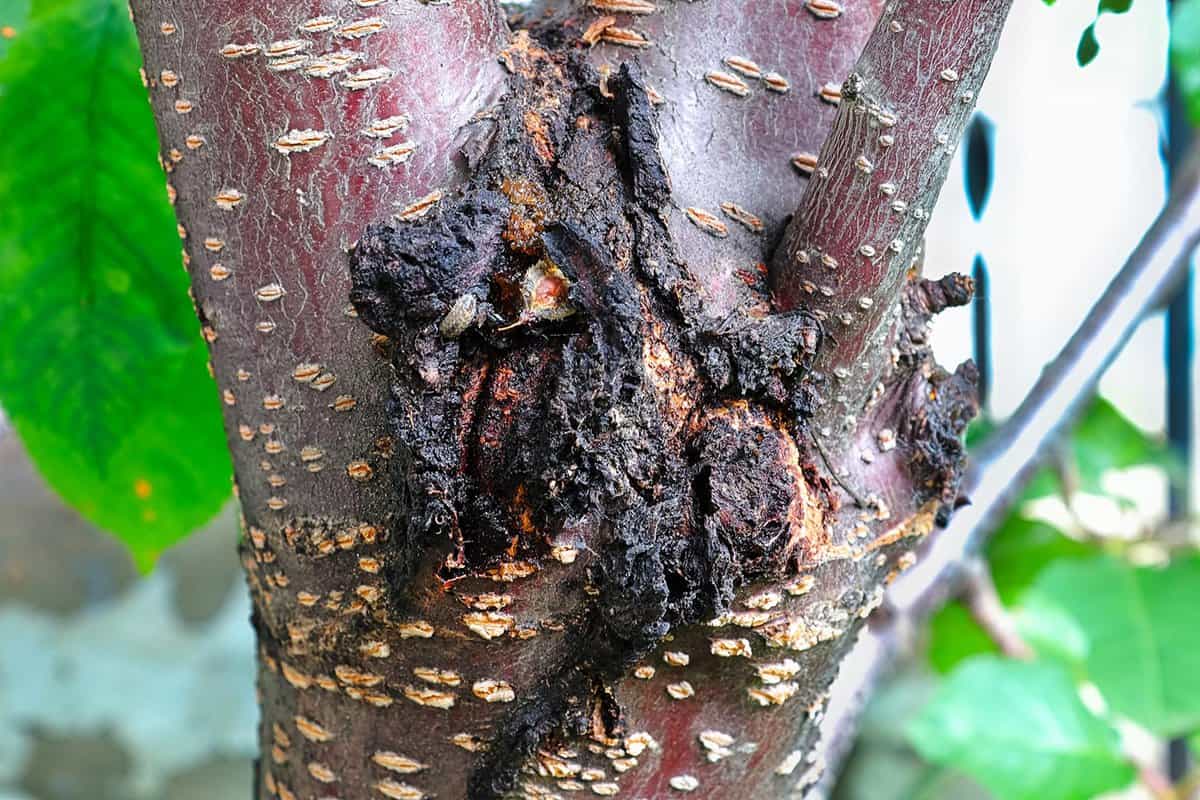
Like wet wood, canker is common in plants or trees with open wounds, where bacteria, fungi, or other plant microbes can invade the tree's internal structure. Also, this problem is deadly to any tree or plant. Its manifestation begins when insufficient water, high or low temperatures, transplant shock, and equipment injury stress the plant.
Its apparent appearance comes from a localized, sunken, or browning of tree bark lesions. When injured bark comes into contact with plant microbes, it can cause liquid to drip from the infected bark and give off an unpleasant odor. In addition, damage to mulberry plants can cause stunted leaf growth, and sometimes, pathogens invade the vascular system and block the tree's water-conducting system, causing wilting or dieback.
5. False Powdery Mildew
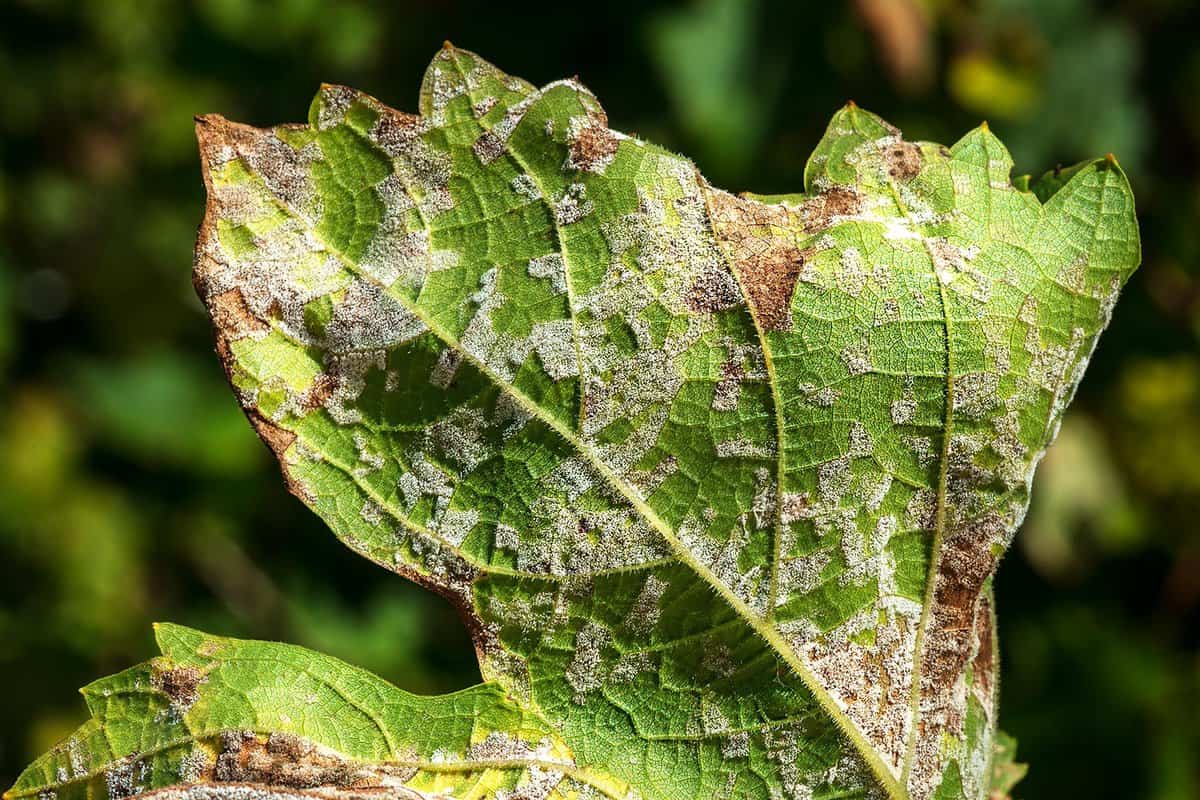
One of the easiest diseases to spot on mulberry trees is the presence of a white powdery texture called false powdery mildew. Furthermore, false mildew often resembles a leaf spot or spray residue because of its white powder-like nature and yellow discoloration. However, what differentiates false mildew from others is the spider web-like element found on the undersurface of the leaves.
Typically, mold under the surface of foliage where temperatures drop and can spread. Sometimes, you will find the leaves turn yellow; this response is due to the discoloration caused by the mold in which it lives. This type of problem is easy to see because it is external compared to other diseases that damage the inside of a tree.
It is also important to remember that if the internal systems of the hosts in which the false mildew live have weakened, they cannot spread. They are obligate pathogens, which means they depend on their host's immunity to thrive.
Check out this multi-purpose fungicide on Amazon.
6. Wood-boring insects
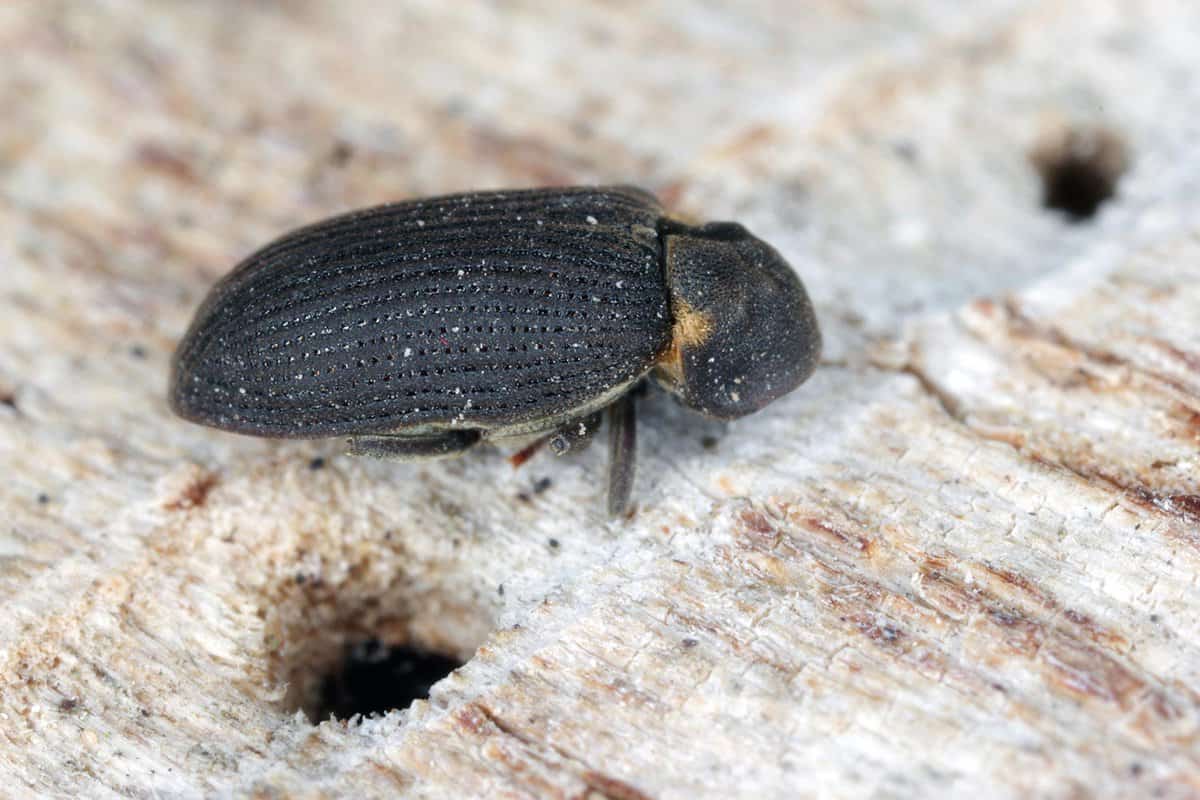
Another thing to consider why your mulberry tree is dying is the presence of boring insects. These insects can cause damage to the wooden structures of any trees they inhabit. Furthermore, they act as openings for plant microorganisms to enter the interior, inhabit the interior, and multiply to infect the plant or tree.
Insects such as glass-winged sharpshooters are generally harmless to mulberries unless they excrete a liquid that causes the leaves to scorch. Another common pest harmful to a mulberry plant is the infestation of scales. They're typically harmless unless a large infestation of scale occurs.
Also, these scales appear as small bumps on your tree or bark that are not visible. It feeds on the natural juices of your tree or bark, resulting in a San Jose scale or an Oleander leaf scale. They can cause leaves to discolor and wilt.
Prevention and Maintenance
Mulberry plants survive regardless of harsh or good weather conditions, drought, soil composition, or pollution. However, certain factors can still cause your mulberries to be damaged and die. This tree can live a long time if properly maintained and cared for.
If your plant encounters a disease, you can still prevent it by thoroughly examining what is causing the plant to become sick. Knowing the common pests and diseases that cause mulberries to wilt and rot is vital. To help save your dying tree, check for any discoloration on the foliage, indented tree trunks, barks, or tree pests that infest your plant.
You can start pruning the infected leaves, trunk, or bark to keep it from spreading. These diseases are often contagious and can spread from one plant to another. Additionally, a fungicide or insecticidal soap will help prevent mold from wilting the leaves and absorb all the nutrients your mulberry plant needs.
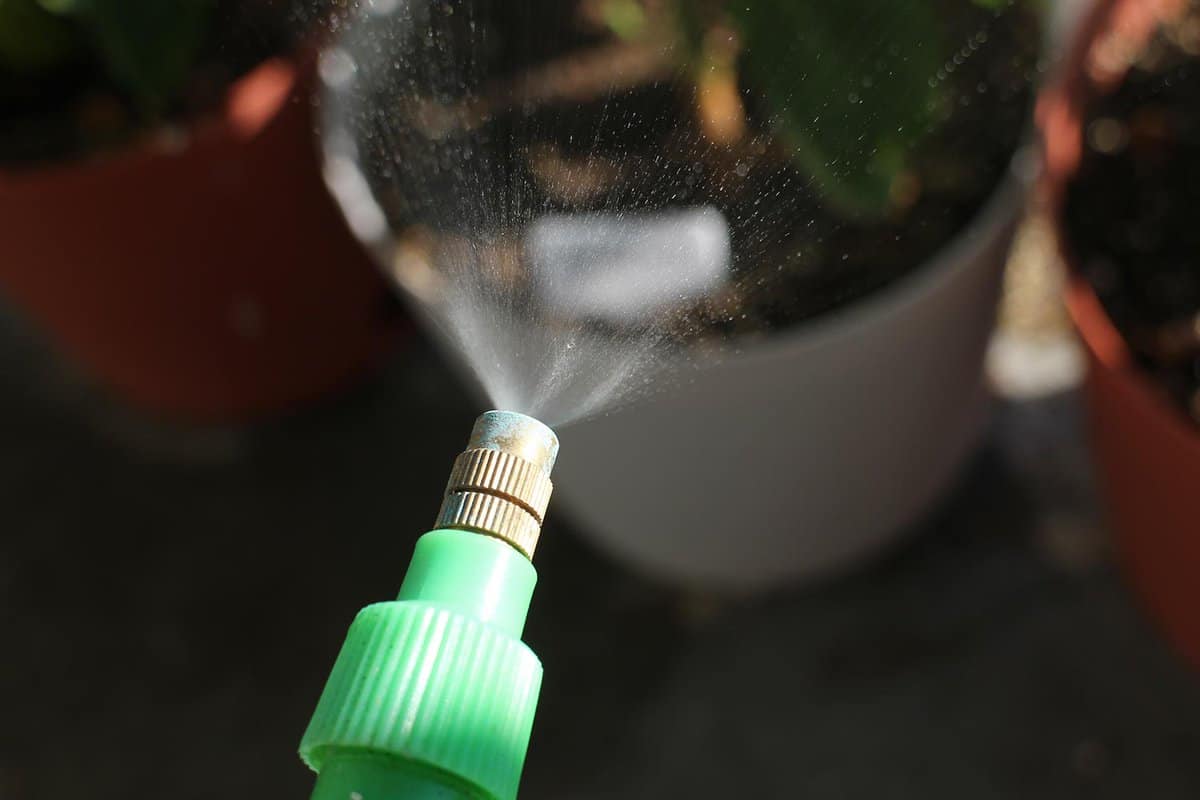
Also, provide adequate shade, lighting for your mulberries, and plenty of water for your nutrients. These plants don't require as much maintenance as other plants, but just enough care and precautions will help them grow into a lush shade that will last a long time.
Check out this insecticidal soap from Amazon.
What are the Benefits of a Mulberry Tree?

There are two types of mulberry trees - non-fruiting trees and fruiting trees. But both trees have health benefits for humans. According to researchers, the leaves and fruits of the tree provide a great source of iron and vitamin C, which are essential for people.
Additionally, these plants are widely used in traditional medicine to treat certain diseases. In addition, the leaves of the mulberry plant have substantial benefits, which include vitamin C and minerals such as calcium, iron, potassium, and magnesium. It is not only used in traditional but also in cooking and present-day activities.
These plants' leaves are used for silkworms' fodder and sometimes sustenance for farm animals. They are beneficial, possibly helping lower blood cholesterol, blood sugar, and infections.
In Closing
Regardless of conditions or factors, the mulberry plant may be considered an easy plant to grow. However, like other trees or plants - boring insects, bacteria, or fungi invade the tree's internal system. Some are usually harmless; if triggered by stimulants could risk plant extinction.
Adequate nutrition, shade, and sufficient moisture are necessary conditions for mulberry growth. It is a low-maintenance tree capable of growing on its own despite harsh conditions or soil composition. However, check your plants from time to time in case of wounds due to certain conditions. Sick plants can still survive if thoroughly handled.
Find out what causes your plants to become infected and start your treatment options from there.
Interested to know why other trees are dying? Read these here.
Dogwood Tree Dying – What Could Be Wrong?
Why Is My Dragon Tree Dying? [With Tips On What To Do About It]



Can a gopher infestation kill an established Mulberry tree that is not receiving supplemental watering?